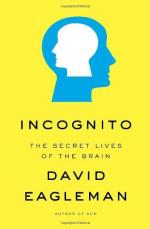
|
| Name: _________________________ | Period: ___________________ |
This test consists of 5 multiple choice questions, 5 short answer questions, and 10 short essay questions.
Multiple Choice Questions
1. What do most of us notice in the world around us?
(a) Just when something is out of the ordinary.
(b) About ten percent of what is actually there.
(c) That which impacts our safety.
(d) About ninety percent of what is actually there.
2. When does Arthur Alberts travel from New York to Africa?
(a) 1949.
(b) 2004.
(c) 1997.
(d) 1989.
3. How do sorters learn to do their job?
(a) By watching experts sort.
(b) By an expert sorter correcting a novice.
(c) By studying videos of how to sort.
(d) By reading a how-to book.
4. Of what are we unconscious when we move an arm?
(a) If the arm moved before or after we thought about moving it.
(b) The flurry of neural impulses that caused the arm to move.
(c) Why we moved the arm.
(d) If our brain or eyes initiated the move.
5. Who is one person the author mentions as understanding the arrangement between the conscious and unconscious mind?
(a) Freud.
(b) Jung.
(c) Ericksson.
(d) Johnson.
Short Answer Questions
1. How far in the past do we actually "live"?
2. How complex is the human brain?
3. What does Eagleman say has happened to complicated processes in his analogy of consciousness?
4. What is the consistency of the brain?
5. To what are innumerable facets of ourselves linked?
Short Essay Questions
1. How can the brain see without eyes and what is one way this is possible?
2. What is one example Eagleman gives of how one reacts to something before the person is even aware of the situation?
3. Why does Eagleman say it is not correct to change lanes by turning the wheel right and then straightening it out?
4. What does Eagleman say about how vision works?
5. How is one's conscious mind limited and how does this make the mind more difficult to understand?
6. How is our brain wired for performing complicated tasks and why?
7. Summarize the experiment Eagleman writes about concerning photographs of women and how men responded.
8. What happens to a blind person who recovers his/her sight?
9. What is one way to measure how our unconscious minds affect our conscious thinking without our even knowing it?
10. What does Eagleman say Sigmund Freud understood?
|
This section contains 898 words (approx. 3 pages at 300 words per page) |

|




